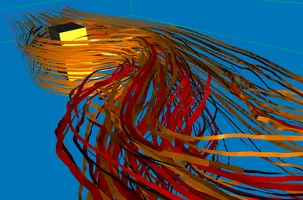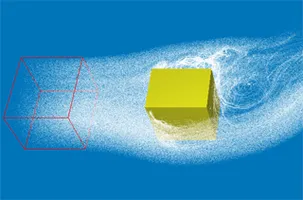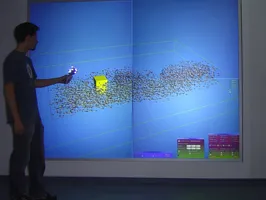Background
In flow research and industrial practice vector field data is one of the key sources for the analysis of flow field dynamics. Visual exploration of such fields imposes significant requirements on the visualization system and demands for approaches capable of dealing with large amounts of vector valued information at interactive rates.
Previous approaches to virtually explore high-resolution flow fields lack the ability to simultaneously advect and display large amounts of particles. In the current research project we overcome this drawback by exploiting features of recent graphics accelerators to advect particles in the graphics processing unit (GPU), saving particle positions in graphics memory, and then sending these positions through the GPU again to obtain images in the frame buffer. This approach allows for interactive streaming and rendering of millions of particles using higher order numerical integration schemes. For the first time ever, this approach enables real-time visualizations of large flow fields in real-time on commodity PC hardware.
These techniques have been integrated into a large-display environment driven by a multi-processor PC-cluster. In our visualization laboratory, a 9-node PC-cluster (Dual Nocona, Infiniband interconnector, NVIDIA 512MB) is connected to a 2x2 tiled display. In this environment we can trace and display up to 5 Million particles in high-resolution flow fields at 30 fps. By integrating off-the-shelf tracking devices as well as stereoscopic views, the virtual windtunnel enables real-time visualization of flow fields similar to reality.
Publications
- Interactive Visual Exploration of Unsteady 3D Flows
- The Application of GPU Particle Tracing to Diffusion Tensor Field Visualization
- A Particle System for Interactive Visualization of 3D Flows
- UberFlow: A GPU-Based Particle Engine
Awards

Winner of the IEEE Visualization Contest 2005

Winner of the IEEE Visualization Contest 2006


